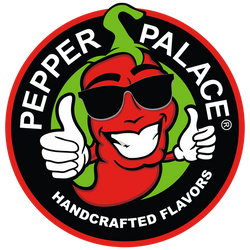Find a Store
Who Invented Chips and Salsa?
Truly one of the greatest achievements of humankind, the invention of chips and salsa as a power-snacking pair can’t be pinpointed to a particular person or business. The marriage emerged organically as a result of Mexican culinary influences on the United States and the undeniable chemistry between crispy corn triangles and tomatoes. Let’s break this complex history into its parts to find out where they came from and how they got to our party tables as the terrifically tasty twins.
Who invented the first tortilla chip?
There were a few key figures responsible for the invention of the now ubiquitous tortilla chip, and it all starts in Mexico, the Godmother of Tortilla Chips. Fried tortilla bits existed in Mexico long before Americans succumbed to the siren song of bottomless chips and salsa at their favorite El Ranchero restaurant. Called tostadas, the precursor to what we know as tortilla chips have been around for ages, with no known inventor (we’re guessing it was the salsa-loving Aztecs). The chips made their way into Southern California restaurants around 1900, but nobody thought much of them. It took three major players to push modern tortilla chips into existence and onto rows and rows of grocery store shelves.
Who made the first salsa?
The Aztecs, Incas, and Mayans created a sauce from tomatoes, chilies, and squash seeds. Spanish conquistadors “discovered” it, and a priest named Alonso de Molina unimaginatively coined it “salsa” (which is literally just Spanish for “sauce”). As the conquistadors pillaged their way through Latin America, salsa came with them, rooting in Spanish-Mexican life and evolving into a delightfully complex cooking sauce of red (tomato) or green (tomatillo) varieties, all flavored with chile peppers.
In time, Mexican immigrants brought salsa to the United States, and by the 1940s, it was a staple in Southwest kitchens. Soon after, El Paso Chile Company and Pace Foods popped up in Texas, and their catchy marketing campaigns made salsa and picante sauce famous. Around the mid-1980s, salsa transformed into an ubiquitous American chip dip and condiment. And by 1992, salsa outsold ketchup in the US, where it remains a favorite condiment. Today, no one is allowed to throw a Super Bowl party without it.
Where do chips and salsa originate from?
The chips-and-salsa combo, especially as a pre-dinner nosh, hails from the United States, where the American-Mexican blend known as “Tex-Mex” emerged. Like chimichangas and burritos, chips and salsa emerged as Americans began to explore and enjoy the delights of Mexican food.
Are chips and salsa a thing in Mexico?
Hard no—chips and salsa is not a thing in Mexico. This unrestrained appetizer or snack is American, through and through. In fact, for Mexican chefs who still consider salsa a cooking sauce, watching us down tiny cauldrons of red salsa is like Americans watching Canadians serve ranch dressing as a pre-dinner cocktail.
Are chips and salsa healthy?
It’s all relative, right? Salsa is generally considered healthy (we’re even pushing to have it named the next “superfood”), but the chips are debatable. Tortilla chips, especially blue corn, are generally healthier than potato chips, but they’re not as healthy as a nice, leafy green salad. A typical half-basket of restaurant tortilla chips can run around 300-400 calories, but the salsa you eat with them may only add up to 20-50 calories. So, if you’re watching your waistline or cholesterol levels, read the chip bag labels to get the healthier choices. Pepper Palace salsas feature the finest ingredients with zero added sugar, so they’re all guilt-free—just go easy on the chips and you’re good to go.
